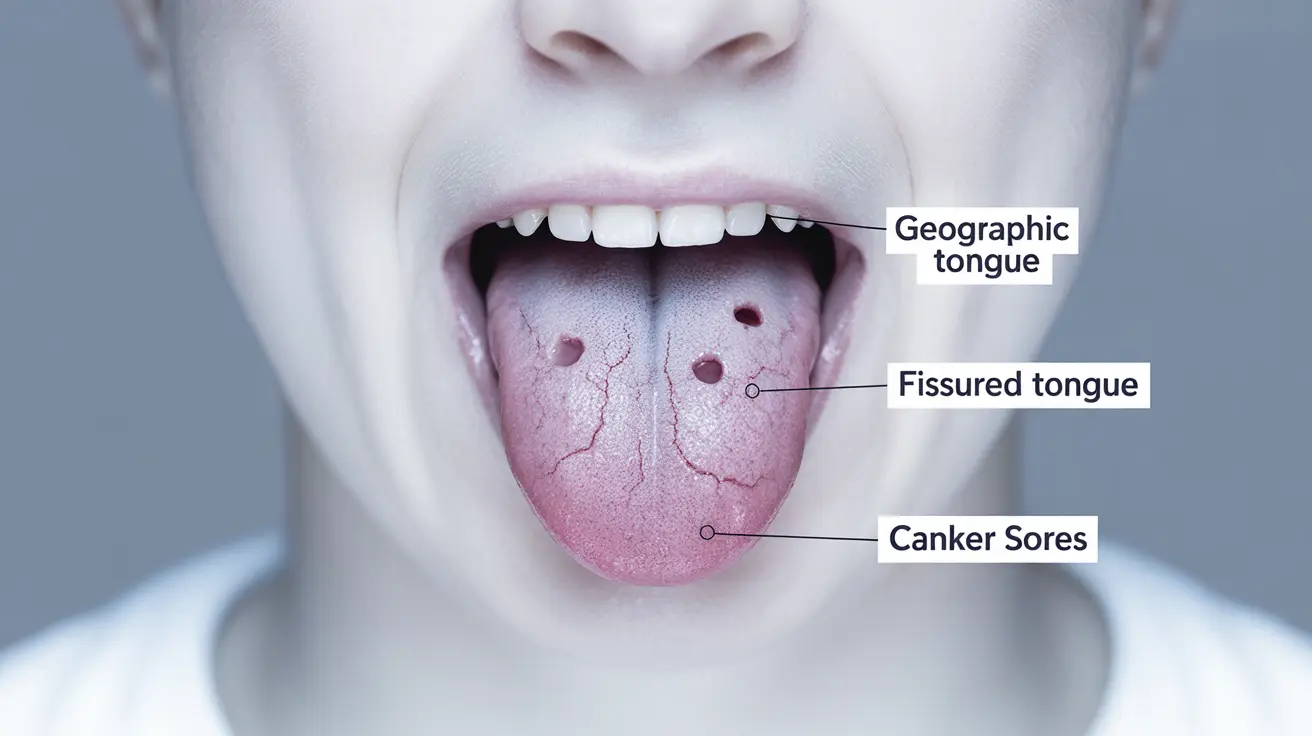Discovering what appears to be a hole in your tongue can be alarming, especially when concerns about cancer arise. While a hole or depression in the tongue can have various causes, understanding the difference between benign conditions and potential warning signs is crucial for proper medical care and peace of mind.
This comprehensive guide will help you understand the various causes of tongue abnormalities, recognize important warning signs, and know when to seek medical attention.
Common Causes of Tongue Holes and Depressions
Several conditions can create the appearance of holes or depressions in the tongue, many of which are benign:
- Geographic tongue (benign migratory glossitis)
- Fissured tongue (deep grooves)
- Canker sores
- Trauma or injury
- Infected salivary glands
- Dental impressions
Understanding Benign Tongue Conditions
Most tongue abnormalities are not cancerous. Geographic tongue creates patchy areas that can appear like shallow depressions, while fissured tongue presents with natural grooves that deepen with age. These conditions, while sometimes concerning in appearance, are typically harmless and require no treatment.
Warning Signs That Require Medical Attention
Certain symptoms accompanying a hole or depression in the tongue warrant immediate medical evaluation:
- Persistent sores lasting more than two weeks
- Unexplained bleeding
- Difficulty swallowing or speaking
- Numbness or tingling
- Pain that doesn't improve
- White or red patches that don't go away
Understanding Tongue Cancer Risk Factors
While tongue cancer is relatively rare, certain factors can increase risk:
- Tobacco use (smoking or chewing)
- Heavy alcohol consumption
- Poor oral hygiene
- Human papillomavirus (HPV) infection
- Previous head and neck cancer
- Advanced age
Diagnostic Process and Medical Evaluation
When evaluating tongue abnormalities, healthcare providers typically:
- Perform a detailed oral examination
- Review medical history
- Consider risk factors
- May order imaging tests
- Conduct a biopsy if suspicious features are present
Prevention and Maintenance
Maintaining good oral health can help prevent many tongue problems:
- Regular dental check-ups
- Proper oral hygiene
- Avoiding tobacco products
- Limiting alcohol consumption
- Eating a balanced diet
- Regular self-examination
Frequently Asked Questions
What causes a hole or hole-like appearance in the tongue, and is it always cancer?
A hole-like appearance in the tongue can be caused by various conditions, most of which are not cancer. Common causes include canker sores, geographic tongue, fissured tongue, or trauma. While cancer is a possibility, it's relatively rare and typically presents with additional symptoms.
How can I tell the difference between tongue cancer and other conditions like canker sores or a fissured tongue?
Canker sores typically heal within two weeks and have a white or yellow center with a red border. Fissured tongue shows natural grooves that are typically symmetrical. Cancer-related lesions usually persist beyond two weeks, may bleed easily, and often cause pain or difficulty with speaking or swallowing.
What are the early signs and symptoms of tongue cancer to watch for?
Early signs of tongue cancer include persistent sores or lumps that don't heal, unexplained bleeding, white or red patches, difficulty moving the tongue, numbness, and persistent pain. Any of these symptoms lasting more than two weeks should be evaluated by a healthcare provider.
When should I see a doctor if I notice a sore, lump, or hole on my tongue?
See a doctor if you notice any tongue abnormality that persists for more than two weeks, causes significant pain, bleeds easily, or interferes with speaking or swallowing. Also seek immediate evaluation if you experience numbness or have difficulty moving your tongue.
Can tongue cancer cause an actual hole in the tongue, and how common is this?
While advanced tongue cancer can cause tissue destruction that may appear as a hole or ulceration, this is relatively uncommon in early stages. Tongue cancer affects approximately 17,000 Americans annually, and early detection typically occurs before significant tissue destruction occurs.




